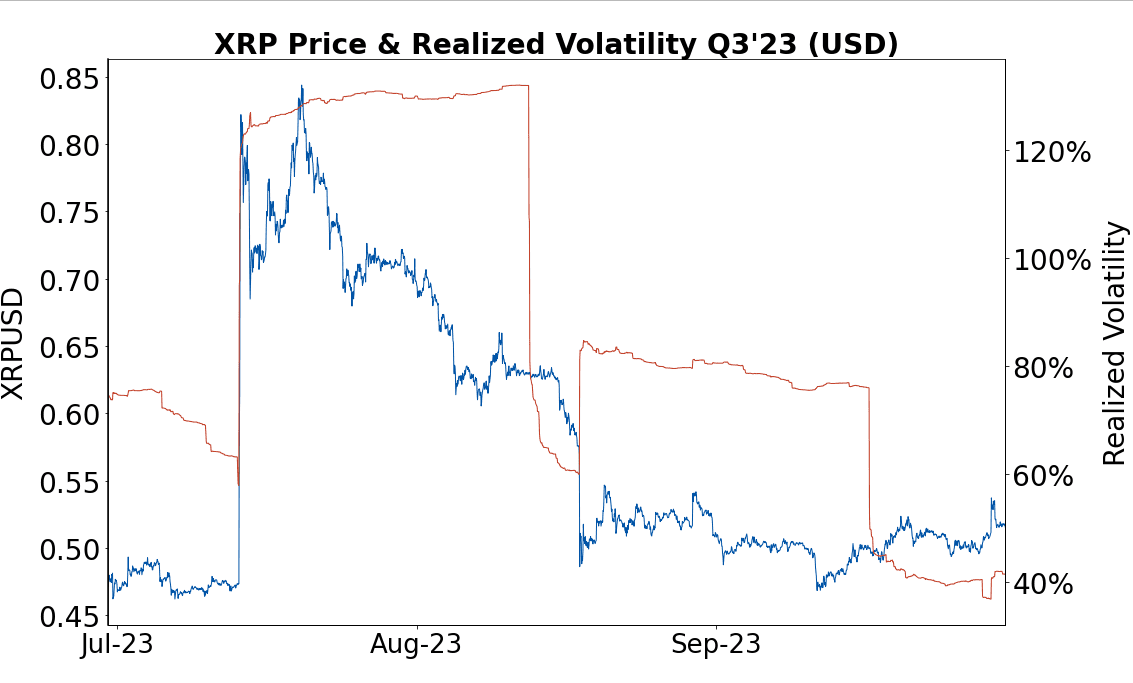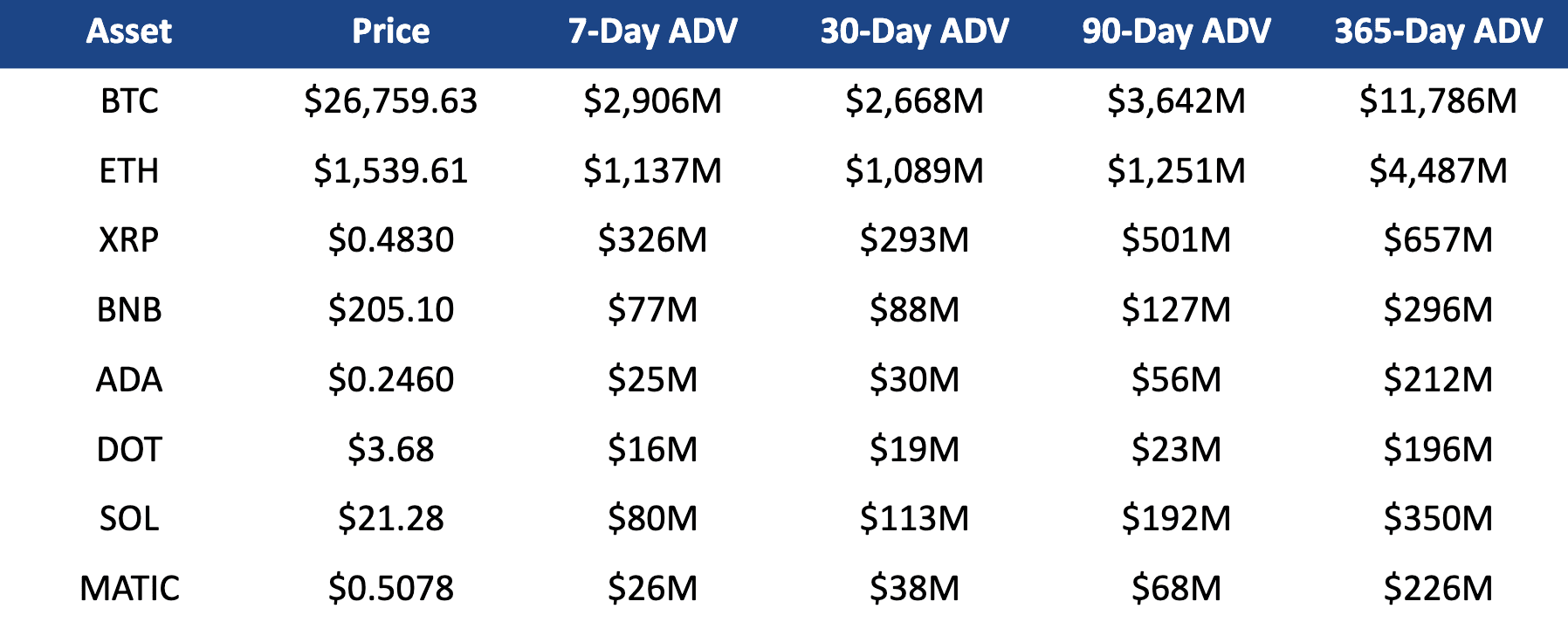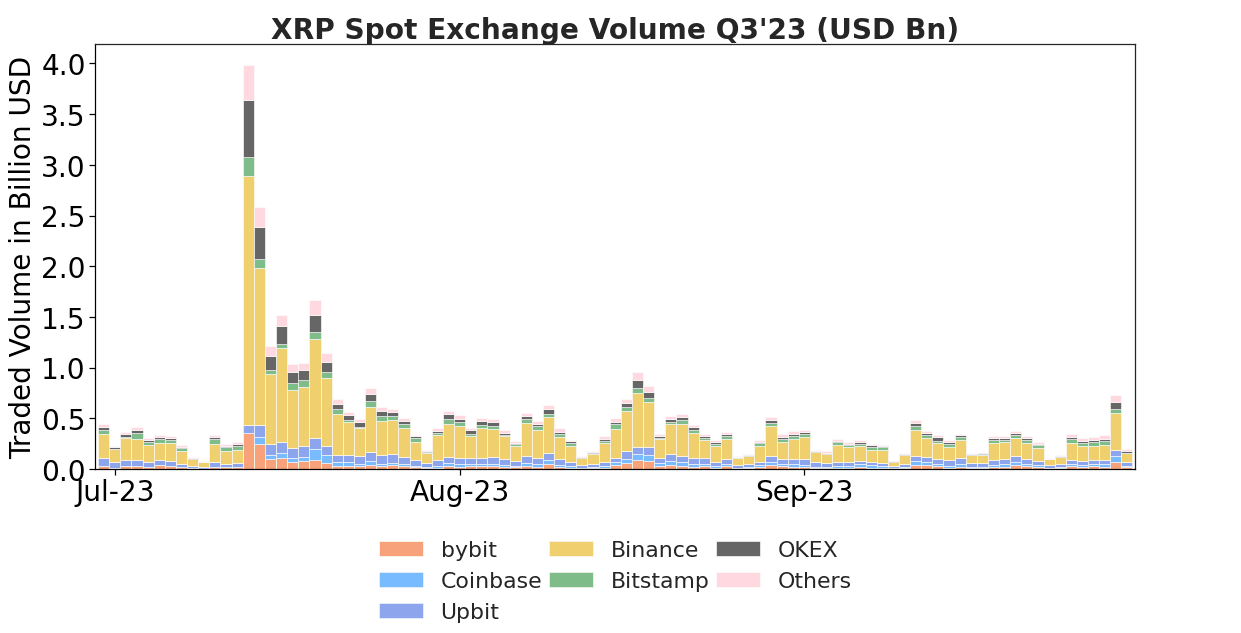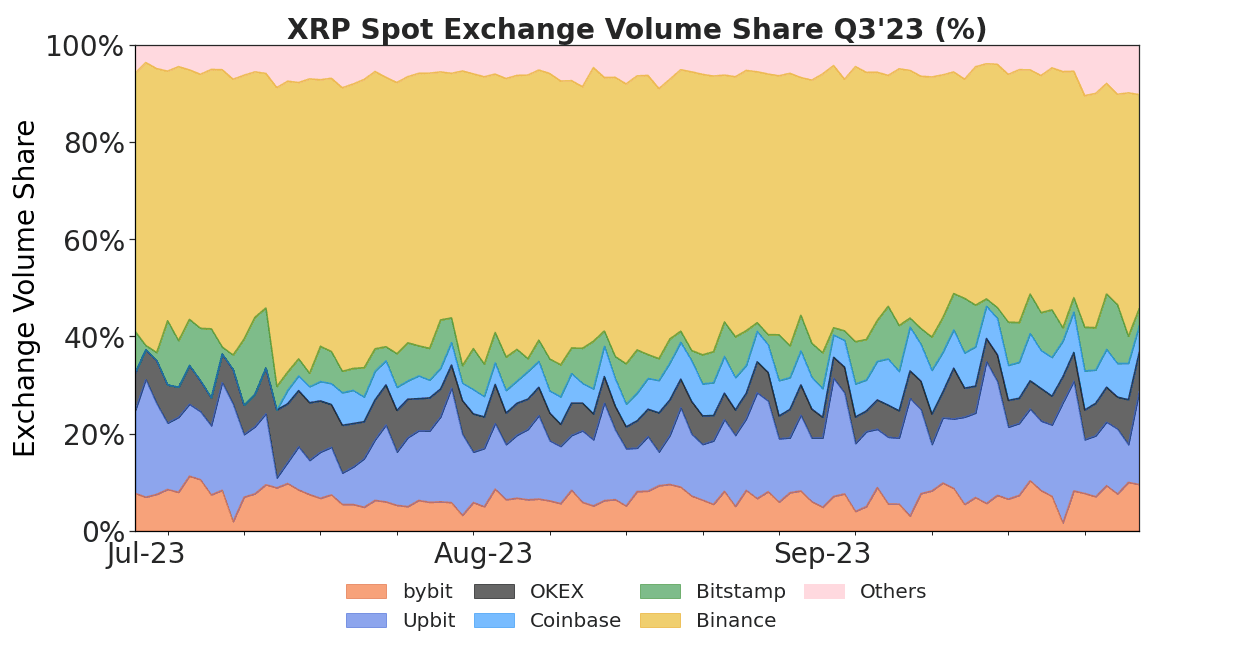Ripple publishes the quarterly XRP Markets Report to voluntarily provide transparency and regular updates on the company’s views on the state of crypto markets, relevant XRP Ledger and XRP-related announcements, and market developments over the previous quarter.
As an XRP holder, Ripple believes proactive communication and transparency are part of being a responsible stakeholder. Moreover, Ripple urges others in the industry to build trust, foster open communication and raise the bar industry-wide.
Crypto Markets Summary
In Q3, the crypto market drew fewer cues from broader macro assets, instead placing greater emphasis on industry specific news and flows of capital. Throughout Q3, BTC’s correlation to the S&P hit historic lows at 0.23. XRP also exhibited a low correlation of 0.16 over the same time period.
There were significant market developments that weighed on asset prices and liquidity. Multiple instances of protocol hacks, rug pulls and scams dominated headlines as nearly $686 million was lost in the recent quarter. In September, a hot wallet security breach on HTX resulted in the loss of $8 million worth of ETH while the cross-chain protocol Mixin Network suffered a $200 million worth of crypto loss due to an exploit. Coupled with ongoing volatility and uncertainty in traditional markets, these factors drove trading volumes to some of the industry’s lowest levels. BTC volumes reached a three-year low of $1-2B a day, and correspondingly, XRP volumes neared a four-year low of $300-400M a day.
Trading activity in XRP continued to predominantly occur on the major non-US exchanges such as Binance, OKX and Upbit. Following the US court decision in July, which ruled XRP is not a security, the token was relisted on a number of US exchanges, including Coinbase and Kraken. Challenger exchanges that prioritized regulated token status gained market share. For instance, Bullish has shown material growth since its recent listing of XRP. Additionally, XRP options markets have emerged with new listings on Bit.com and Deribit.
Limited inflow of fresh cash into the market led to continued leverage in the broader crypto system. Market activity was likely largely driven by market-maker positioning and their client flows as crypto interest levels resembled those before 2020 levels, and retail exchange volumes also were at similar levels.
Lastly, it will come as no surprise that all eyes are on spot BTC/ETH ETF approvals slated for Q1 2024 or earlier. Whether this marks the moment for a massive influx of capital remains uncertain. That uncertainty is reflected in global macro conditions as well, which have arguably become even more complex with the developments in the Middle East. Since then, the overall market perception of global economic conditions and stability has decidedly changed as US bond yields staged historic moves, commodities surged significantly and money flocked to safe-haven currencies like the Swiss Franc. The combination of these factors has sparked this most recent uptick in crypto prices.
Update on the SEC Lawsuit against Ripple
On October 19, the SEC dismissed all remaining charges against Ripple CEO Brad Garlinghouse and Executive Chairman Chris Larsen. This stunning capitulation by the SEC was a dismissal “with prejudice,” meaning this decision is final and the SEC cannot later try and bring those claims again. There was no settlement involved, and there will be no trial against the individuals in April. The case will now move straight into the remedies stage in which the Court will decide which remedies to impose, if any, in light of the Court’s finding that certain institutional sales constituted sales of securities.
This news follows a series of consecutive wins for Ripple including the July 13 decision ruling that, as a matter of law, XRP is not a security, and the October 3 decision denying the SEC’s bid for an interlocutory appeal.
Global Regulatory Developments
While the US continues to grapple with a lack of crypto regulatory clarity, Asian regulators have taken the lead on providing guidance and rulebooks on crypto. Singapore's MAS granted a major payments institution license to Ripple only four months after granting initial in-principle approval in June of this year. Coinbase and Sygnum also received their Major Payment Institution licenses. In addition, MAS released a regulatory framework intended to bolster the stability of single-currency stablecoins. In Europe, the UK’s FCA asked crypto businesses to fall in line with new financial promotions rules and a new UK bill is set to give local authorities powers to freeze and confiscate crypto assets tied to crime if approved later this year. Finally, leaders of the G20 are pushing for a speedy implementation of a cross-border framework for crypto.
Deep Dive: XRP Markets
Moving forward, Ripple will publish standardized market metrics sourced from public sources including CCData, Bloomberg and Refinitv Eikon.
Chart 1: XRP price and realized volatility experienced spikes on the days of the SEC decision (July 13) and the large risk-off move that occurred on August 17. XRP ended the quarter at historical 90-Day lows of volatility (~40%).

Table 1: Major tokens price and volume (end of Q3 ‘23 figures)

Current USD prices and weekly returns in percentage points. The 30-Day, and 90-Day average trading volume reflects daily trading activity for the USD and stablecoin pairs on top tier exchanges as measured by CCData.
Chart 2: Following a large spike to ~$4B of traded volume on July 13 (the day of the Court decision), XRP volumes gradually cooled off and concluded the quarter at $300-400M a day.

Chart 3: The majority of XRP trading activity is currently with stablecoins, primarily due to the overwhelming majority of exchanges trading XRP against USDT.

Chart 4: Binance remained an outsized player in the XRP market (an average of ~60% over Q3). There has been some uptick in the “Other” category as more exchanges turned on XRP trading. US exchanges have grown to be almost 5% of global XRP volume (in USD value).
The State of the XRP Ledger
As the community continues to build on the XRP Ledger, significant features were proposed to ensure developers can create innovative applications while providing enhanced trust and safety for their issued assets:
: this proposal adds a non-custodial automated market maker (AMM) as a native feature to the XRPL’s decentralized exchange (DEX). Developers can use XLS-30d AMM integration to create new financial applications and/or integrate into non-financial applications. With the AMM being built as a protocol rather than an application, liquidity is aggregated at the protocol level and is shared with the order book DEX, ensuring better pricing and availability of tokenized assets on the XRPL. RippleX performance and engineering teams published a
attesting to the proposed amendment’s enhancement to network utility, particularly for cross-currency payments.
: this amendment enables a cross-chain bridge where XRP can move bi-directionally between XRPL Mainnet and a XRPL Sidechain. This cross-chain bridging software will also be used to establish a connection between XRPL Mainnet and the upcoming
(currently available on devnet), bringing interoperability to the XRP Ledger and empower developers with better customization.
Last quarter, the community continued to create and advance notable projects and apps to address a variety of use cases. Notably, NFTrade announced its integration with the XRP Ledger marking the first first multi-chain NFT marketplace to support XRPL. This integration also introduced protocol-level royalty protections through the XRPL's XLS-20 standard. RWA Protocol announced the launch of $HOME, the first mortgage-backed stablecoin on the XRP Ledger and Ducati launched its first-ever digital collectible on the XRP Ledger.
On-Chain Activity
Trading volume on the XRP Ledger’s DEX increased more than 3x in Q3. This was due to several days between 7/12 to 8/17 when single-day trading volume was more than $1M, occasionally reaching $20M-30M mid-August.
On-Chain Activity | Q3 2023 | Q2 2023 |
Transactions | 90,446,746 | 99,312,734 |
XRP Burned for Transaction Fees | 243,201 | 389,073 |
Avg Cost per Transaction (in XRP) | 0.00269 | 0.00392 |
Average XRP Closing Price (in USD) | 0.55 | 0.48 |
Avg Cost per Transaction (in USD) | 0.001490 | 0.001881 |
Volume on DEX (in USD) | 218,610,501 | 51,671,864 |
Trustlines | 7,583,330 | 7,951,618 |
Number of New Wallets | 157,936 | 138,644 |
The DEX has been operating continuously since the XRP Ledger's launch in 2012, allowing users to buy and sell tokens for XRP or other tokens and providing on-chain liquidity for numerous currency pairs. Native functionality such as auto-bridging allows fungible and non-fungible assets transferred to the XRPL to access the DEX’s existing liquidity to create synthetic order books for assets. The Ledger also has built-in pathfinding functionality allowing it to find the most efficient path for a given trade.
Ripple’s XRP Holdings
Ripple reports information about its XRP holdings at the beginning of the quarter and last day of the quarter. Its holdings fall into two categories: XRP that it currently has available in its wallets, and XRP that is subject to on-ledger escrow lockups that will be released each month over the next 42 months.
For this latter category, Ripple does not have access to that XRP until the escrow releases it to Ripple on a monthly basis. The vast majority of the XRP released is put back into the escrow.
June 30, 2023
Total XRP Held by Ripple: 5,551,119,094
Total XRP Subject to On-Ledger Escrow: 41,900,000,005
September 30, 2023
Total XRP Held by Ripple: 5,258,162,324
Total XRP Subject to On-Ledger Escrow: 41,300,000,005







